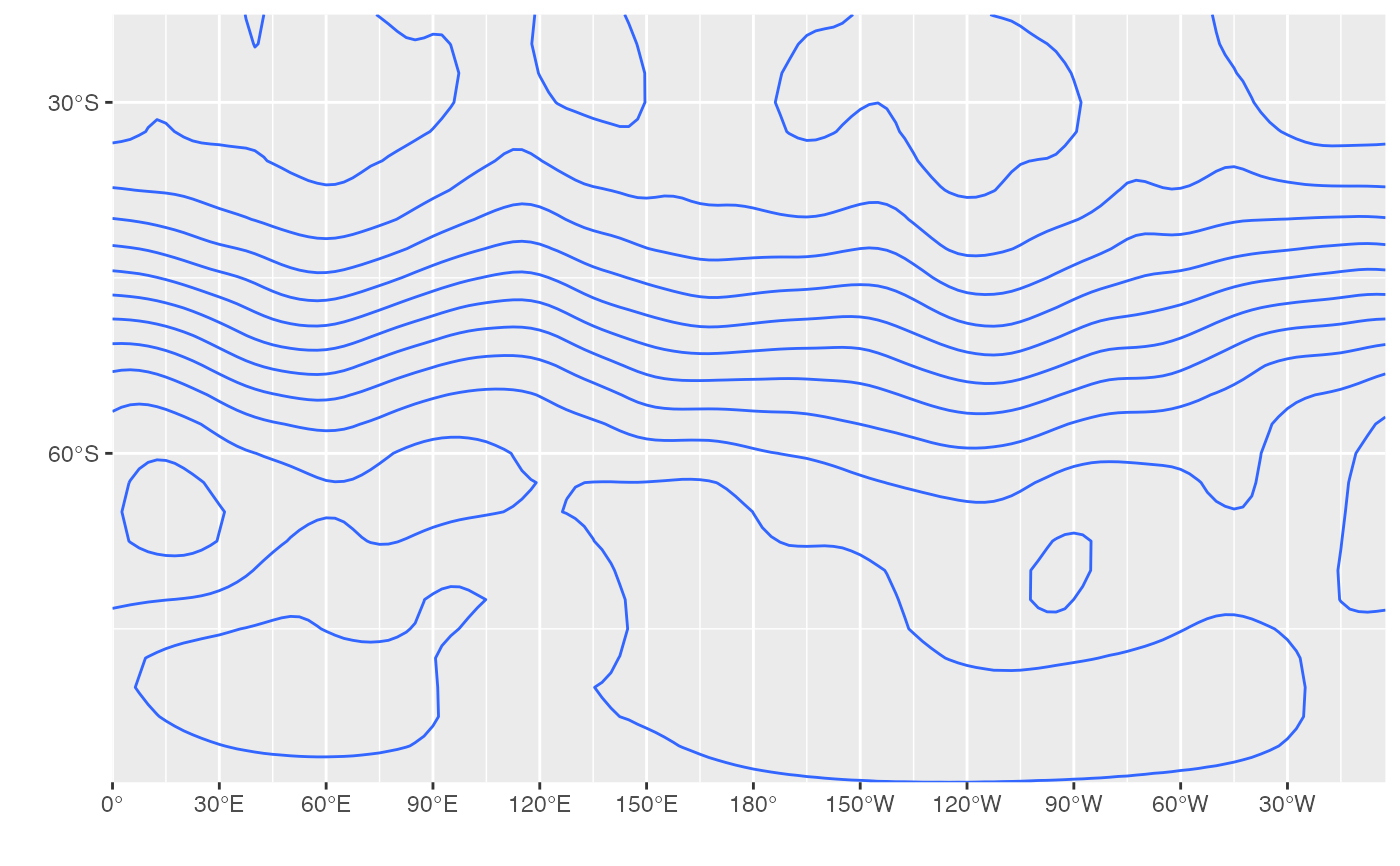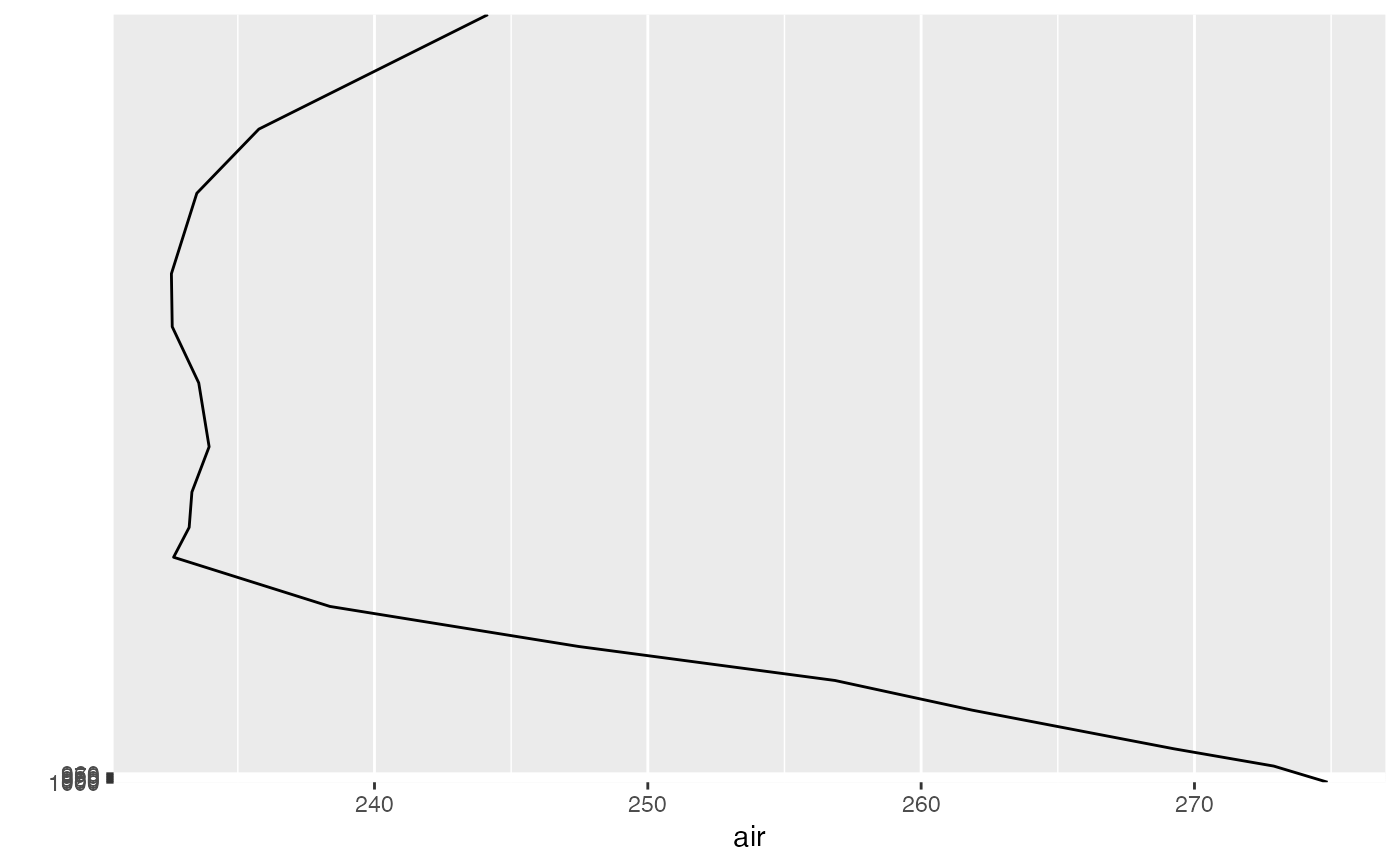These functions are simple wrappers around
scale_x_continuous and
scale_y_continuous with
helpful defaults for plotting longitude, latitude and pressure levels.
scale_x_longitude(
name = "",
ticks = 30,
breaks = seq(-180, 360, by = ticks),
expand = c(0, 0),
labels = LonLabel,
trans = "identity",
...
)
scale_y_longitude(
name = "",
ticks = 60,
breaks = seq(-180, 360, by = ticks),
expand = c(0, 0),
labels = LonLabel,
trans = "identity",
...
)
scale_x_latitude(
name = "",
ticks = 30,
breaks = seq(-90, 90, by = ticks),
expand = c(0, 0),
labels = LatLabel,
...
)
scale_y_latitude(
name = "",
ticks = 30,
breaks = seq(-90, 90, by = ticks),
expand = c(0, 0),
labels = LatLabel,
...
)
scale_x_level(name = "", expand = c(0, 0), trans = "sa_height", ...)
scale_y_level(name = "", expand = c(0, 0), trans = "sa_height", ...)Arguments
- name
The name of the scale. Used as the axis or legend title. If
waiver(), the default, the name of the scale is taken from the first mapping used for that aesthetic. IfNULL, the legend title will be omitted.- ticks
spacing between breaks
- breaks
One of:
NULLfor no breakswaiver()for the default breaks computed by the transformation objectA numeric vector of positions
A function that takes the limits as input and returns breaks as output (e.g., a function returned by
scales::extended_breaks()). Also accepts rlang lambda function notation.
- expand
For position scales, a vector of range expansion constants used to add some padding around the data to ensure that they are placed some distance away from the axes. Use the convenience function
expansion()to generate the values for theexpandargument. The defaults are to expand the scale by 5% on each side for continuous variables, and by 0.6 units on each side for discrete variables.- labels
One of:
NULLfor no labelswaiver()for the default labels computed by the transformation objectA character vector giving labels (must be same length as
breaks)An expression vector (must be the same length as breaks). See ?plotmath for details.
A function that takes the breaks as input and returns labels as output. Also accepts rlang lambda function notation.
- trans
For continuous scales, the name of a transformation object or the object itself. Built-in transformations include "asn", "atanh", "boxcox", "date", "exp", "hms", "identity", "log", "log10", "log1p", "log2", "logit", "modulus", "probability", "probit", "pseudo_log", "reciprocal", "reverse", "sqrt" and "time".
A transformation object bundles together a transform, its inverse, and methods for generating breaks and labels. Transformation objects are defined in the scales package, and are called
<name>_trans(e.g.,scales::boxcox_trans()). You can create your own transformation withscales::trans_new().- ...
Other arguments passed on to
scale_(x|y)_continuous()
See also
Other ggplot2 helpers:
DivideTimeseries(),
MakeBreaks(),
WrapCircular(),
geom_arrow(),
geom_contour2(),
geom_contour_fill(),
geom_label_contour(),
geom_relief(),
geom_streamline(),
guide_colourstrip(),
map_labels,
reverselog_trans(),
scale_divergent,
stat_na(),
stat_subset()

